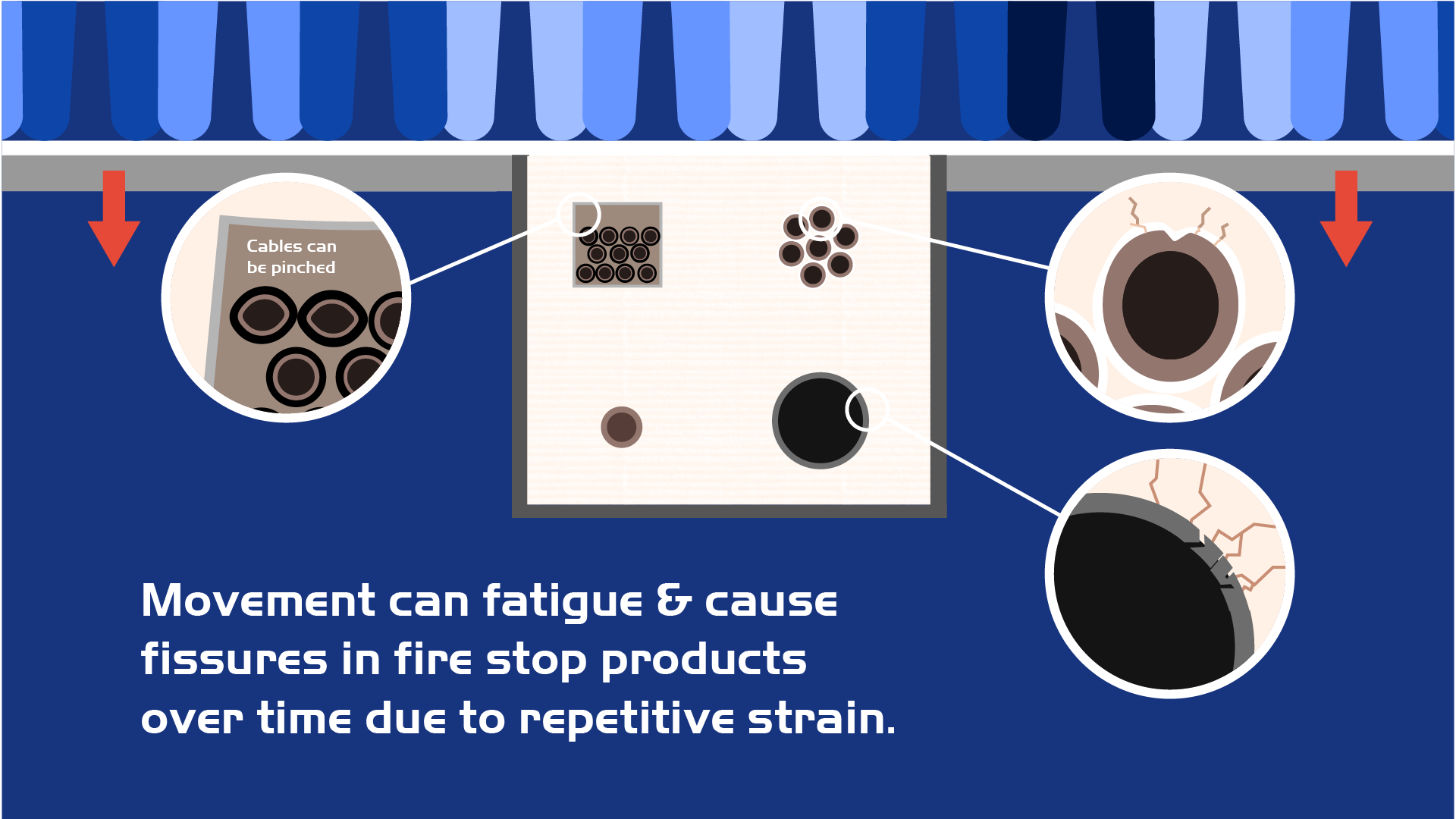Why Soffit Deflection Matters More Than You Think


Why Soffit Deflection Matters More Than You Think
Soffit deflection might not be the first thing you consider when designing or maintaining a building, but its impact runs deeper than you’d expect. From unsightly cracks to compromised fire safety, this subtle structural movement can cause a host of issues if left unchecked.
Let’s break it down—and explore how you can mitigate the risks.
What is Soffit deflection?
Soffit deflection refers to the vertical movement or sagging of a soffit system due to pressure on the building’s primary structure. These pressures can come from everyday factors like occupants and furniture (live loads), or from environmental forces such as wind or snow.
Since soffits are typically attached to structural elements like floor joists or roof trusses, any shift in these components will likely be mirrored in the soffit system. And that’s where the problems start.
The Real-World Impact on Building Services
Deflection may be subtle at first, but its effects can ripple throughout a building’s infrastructure:
Cracking and Aesthetic Damage
One of the most visible issues is cracking—particularly where walls meet ceilings. These aren’t just cosmetic annoyances; they’re signs of stress and potential instability.
Strain on Ceiling-Mounted Fixtures
Lights, HVAC diffusers, sprinkler heads—if they’re fixed in place while the ceiling moves, you can expect stress, misalignment, and even equipment failure over time.
Compromised Acoustics
Gaps and misalignments in the soffit caused by deflection can allow sound to pass through more easily, reducing acoustic performance—especially important in schools, offices, and multi-unit housing.
Higher Maintenance Costs
Small issues can quickly snowball into costly repairs, especially if the root cause—deflection—isn’t addressed.
The Firestopping Factor
Soffit deflection isn’t just a matter of maintenance—it can also jeopardise fire safety systems. Firestopping, which helps compartmentalise fire and smoke, depends on tight seals and stable connections. If deflection isn’t accounted for, you risk:
Seal Failure
Movement can cause firestop materials to crack, split, or pull away from the surfaces they’re meant to protect.
Joint Breakdown
At the head-of-wall or floor-to-ceiling joints, even minor movement can compromise installed firestop systems—especially if they weren’t designed with deflection in mind.
Non-Compliance with Codes
Damaged or ineffective firestopping could mean your building no longer meets safety regulations, putting occupants at risk and owners at legal liability.
Designing for Deflection: Smart Strategies
So how do you stay ahead of the curve? Here are some practical ways to reduce the impact of soffit deflection on building systems:
Flexible Connection Details
Design for movement. Use flexible gaskets, sliding connections, or deflection heads that allow the structure to shift without transferring stress to the soffit or its fixtures.
Choose the Right Materials
Opt for soffit deflection and firestopping products that are specifically tested to handle movement. These materials retain their integrity and function even under stress.
Plan Collaboratively
Early coordination between architects, structural engineers, and fire protection specialists ensures that deflection is factored into the design from day one.
Inspect Regularly
Routine checks can catch early signs of movement and damage—before they turn into larger (and more expensive) problems.
Small Shifts, Big Impacts
Soffit deflection might not make headlines, but it can seriously affect the safety, performance, and longevity of your building. By planning for movement rather than reacting to damage, you protect not just your soffits but everything beneath them.
Whether you're designing a new structure or maintaining an existing one, understanding soffit deflection is key to delivering buildings that stand the test of time.










